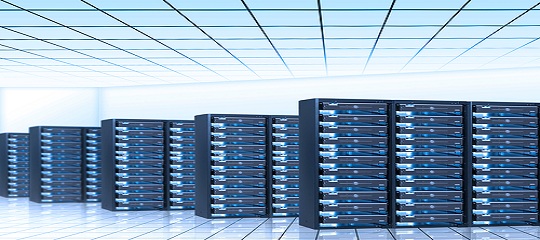Planning to upgrade your data center net? Here are a few things that you should carefully consider before making the move. There is no alternative to 25G if you want to boost performance and enhance working efficiency of the workload of your datacenter. The backward compatibility of 25G will ensure that you get the best from your upgrading efforts.
40Gbps Ethernet is becoming increasingly popular among hyperscale public cloud hosting providers and social media majors as it helps them enhance their server and storage capabilities at an affordable price. Some companies are even considering making a transition to 50 and 100Gbps Ethernet to pump up operational efficiency. If you are looking to improve IT efficiency within your limited budget but still pondering whether to leapfrog from 10Gbps to 100Gbps in one go, consider this.
IT experts are of the opinion that 25Gbps is a practical option that’s not only affordable but can make the transition in a less disruptive manner. There are four things to look at to find out if you are ready for 25Gbps.
Will Your Kind Of Workload Benefit from 25G?
The straight and clear answer is that 25Gbps can work for all types of businesses in terms of size, industry and demands. You could argue that your business does not require high speed networks as high performance applications are not a regular or constant feature of your enterprise. The point that most entrepreneurs miss is that high speed networks is not just about boosting performance. Their core output is improved performance efficiency.
With more applications becoming converged and virtualized, there is a constant pressure on network when applications are being distributed. There is a steady growth in demand for hyper-converged infrastructure that combines compute, storage and virtualization into one seamless platform.
Hyper-converged solutions from top providers use storage powered by software systems and depends on network to allocate data. Load balancing and high availability are also achieved through backups, virtual machine migration and by using snapshots. These are termed as background tasks. They can draw a large quantum of resources and affect the performance of your website. Many companies deal with this by over-provisioning all key demands but that’s not exactly a practical solution. The impact of background tasks can be minimized by increasing network speeds.
Research And Analyze All Available Infrastructure Resources
All major server solution providers offer 25G Ethernet solutions. A number of companies have put their brains together to plan and develop 25G and 50Gbps Ethernet solutions that can operated as per resource demands. Other players have joined the bandwagon pretty fast. Server hosting companies are now offering capabilities of up to 100Gbps Ethernet Adapters.
Consider The Costs Involved In Upgrading to 25G
Is upgrading to 25Gbps an expensive affair? It is commonly believed by many companies that 25Gbps comes at a huge cost. Thankfully, that’s not true. Despite offering bandwidth of capacity that’s two and a half times more than usual, these advanced components are not all that expensive when compared to 10Gbps Ethernet solutions. As they are fully backwards compatible, they can go back to a slower rate of operation when you don’t need high speed. This can save money as you can use the system on a need basis. If you are switching ports, simply choose 25G capable switches. New servers can be equipped with 25G Ethernet adapters. Gradually, you will be able to understand the efficiency benefits of the faster network speeds. A small increment in running costs is all that you have to bear to be 25G ready.
Check Your Cables? Are They Compliant For 25G And Higher Ethernet?
Installing cabling fiber plant is a costly affair and forms a major chunk of your enterprise expenses. This labor intensive process can be time-consuming but more importantly, it can disrupt your day to day operations. The best thing to do is install cables that are capable of handling higher loads at the time of installation. The fibers used in most centers are complaint for 25G to 100 G which means you won’t have to go through the painful process of relaying cables.
So are you now ready to make the transition?
Now that you are aware of what is needed to take the leap from 10G to 25G and beyond, are you ready to make the move? This is the best way to make your data centers future proof and create the opportunity to add to your USPs and value. When you use the information provided and chalk out a proper plan for its implementation, it is unlikely that you will run into any hurdles or roadblocks when you begin to roll out the service.
When you want to upgrade your system and all its relevant components, make sure you choose brands designed to deliver 25G. When not needed, you can automatically shift operations down seamlessly to 10G with the rest of your infrastructure. You will be able to improve the efficiency of all workloads with absolute ease.






 Live Chat
Live Chat